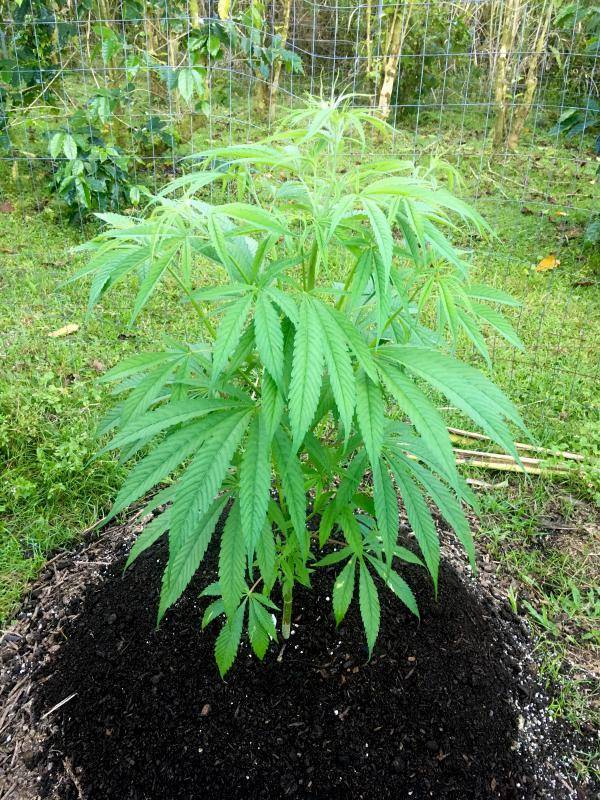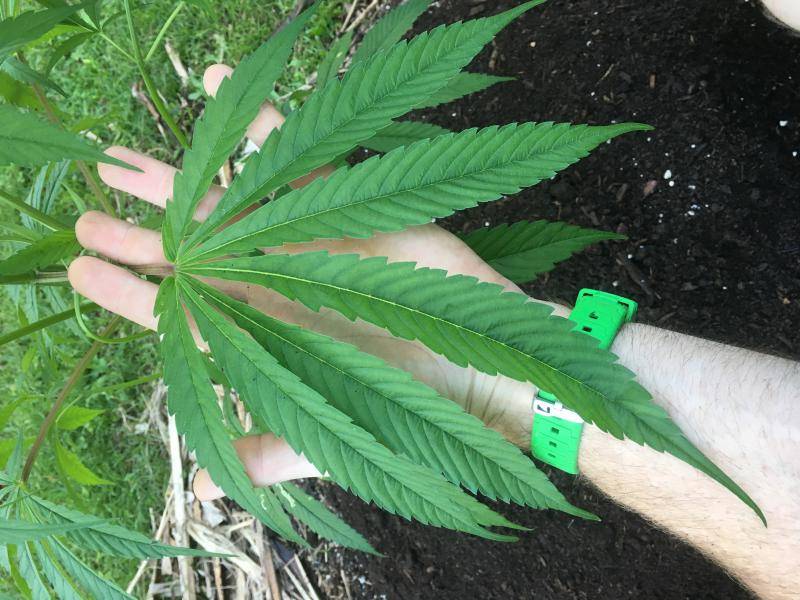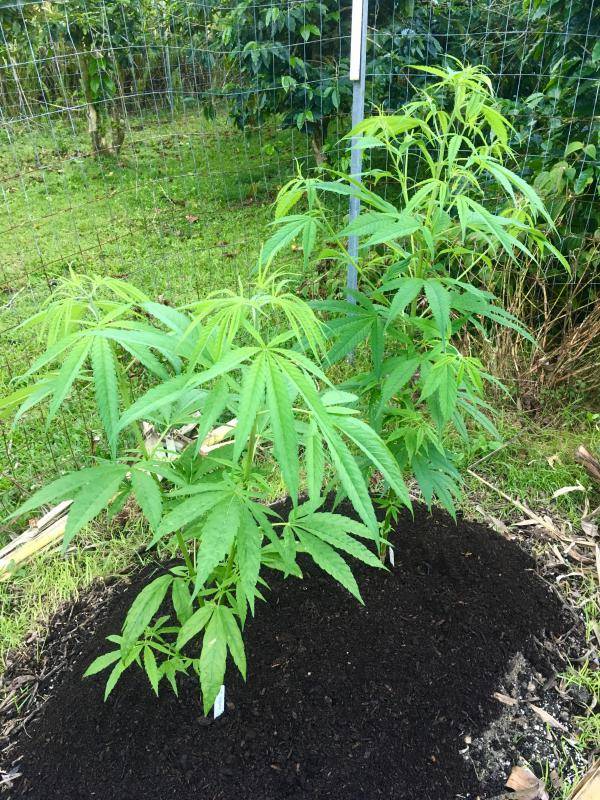ALOHA everyone!
I've been quite busy the past 8+ years, but decided this year to commit more time and energy to cultivating my favorite botanical romance. Though I've been on the outskirts of the IC community for a decade+, I've been following/reading folks and threads and maintaining inspiration to continue on this cannabis path of exploration and discovery.
I'm most excited to share this season's outdoor landrace grow from RSC stock: Malana, Kumaoni and Lebanese. This is my first time working with RSC's gear and my first for landraces as well, which is why I've finally decided to step up and document the grow and share it. I might be too enthusiastic about this lol It's been a long term dream of mine to explore, so I hope this can be of some value to anyone curious about RSC and/or "old world" genetics.
It's been a long term dream of mine to explore, so I hope this can be of some value to anyone curious about RSC and/or "old world" genetics.
I would like to have grown out all 12 seeds of each but space and time doesn't allow, so I'm making the best of what I can. I don't expect much given my small planting, but I'm hopeful I'll receive some insight and encouragement for the next steps in this journey. I also have plenty of others from RSC that I'm itching to play with but I gotta be patient: Chitrali, Parvati, Manupuri.
ENVIRONMENT
I live in Hawaii at 19.5' N, around 1300' (400m), in a relatively cool and generally wet region. Annual rainfall can be as "little" as 100" (2.5m) all the way up to 400" (10m), with day temps getting up to about 85F (29C) and evenings down to 50F (10C). These are the extremes, of course.
Commercially, I grow coffee. And the cannabis gets interplanted at my whimsical discretion hahaha. My farm doesn't have soil but is instead planted above 500 year old pahoehoe lava flow, which was then covered with about 18" (46cm) volcanic cinder by the previous owner. So the coffee and cannabis effectively grow in volcanic rock with a thin layer of organic material on top from years of grass/leaves decomposing (a local grass covers the ground of the entire field, so it's not just exposed rock). This is wonderful for drainage given the high rainfall in this region.
THE BEGINNING
On May 7, I planted the following into 4" square pots with a tried-and-true custom blend that works really well for my circumstances (3 parts coco coir, 2 parts perlite, 1 part worm castings):
2 - Malana
2 - Kumaoni
3 - Lebanese
The pots were placed in a greenhouse and left to figure it out for themselves. It's been quite a rainy, cool year so I think this made overall germination and growth slow in the beginning relative of what I'm used to. I also planted some Neville's Haze, Bubba Kush and Shark Shock CBD at the same time and they were all lagging behind the RSC stock.
Within 3 days of planting, everything but 1 Malana sprouted and was above ground. The landraces, except Lebanese, all stayed out in the natural light cycle while the modern hybrids were put indoors at night to extend photoperiod. Within 12 days, Malana was the most vigorous, with Kumaoni trailing behind just slightly. 2 of the Lebanese didn't get past cotyledon, so I planted 3 more seeds. Sorry I don't have any pics of this stuff. I generally consider this phase of the grow somewhat boring and don't wish to drag the audience through the process lol
By day 16, it was clear the Malana and Kumaoni needed bigger pots. I notice they like to have plenty of root space, even if they're not visually bound by the container size. Planted them into 3 gal pots of the same 3-2-1 blend mentioned above and kept them outside. I fed them lightly with some H & G cocos A/B for the next few weeks until they reached about 24". One of the Kumaoni was incidentally topped by one of my chickens who thought it looked like a good snack apparently. That set it back compared to the other two. I suspect topping isn't too favorable for these plants but, as mentioned, it could very well have been a combination of the high humidity/rainfall and cooler temps slowing things down. The roots have been a bit soggy from the beginning. But I was curious to battle test these since the environment here can swing dramatically.
The Lebanese, in the meantime, went outside during the day only if it was not raining and went inside at night to extend the photoperiod. They were clearly more sensitive to the moisture compared to Malana and Kumaoni. Of the 3 additional seeds I planted later, 2 made it to term.
So, to summarize: 1 Malana, 2 Kumaoni (1 topped after the 3rd node) and 3 Lebanese made it past the 4" container phase.
On June 18 (day 40), the 3 charas champs were transplanted in the ground. I dug shallow holes for them so that half of the root mass was in the volcanic cinder for good drainage, then piled up a rich mix of soil (from a different part of the island), composted chicken manure, steer manure and composted coffee wood chips around them in a nice fluffy mound. I top dressed them with a mix of fish bone meal, calcium carbonate (local crushed coral), sulfate of potash and some Fox Farm mycorrhizae, then topped it all off with a bit more chicken shit. They thrived in their new home. After 2 days, they started growing 1"+ per day and have been taking off ever since. They still need a bit more N though, as you can see in the pics.
Here's Malana after being in the ground for a week (apologies for the poor quality):


Biggest damn fan leaves I've ever seen! This lady (or so I think) is roughly 3' tall at the time of the photo, which was taken June 25. Here are the 2 Kumaoni, planted somewhat close together because I have a suspicion at least one is male. If it is, and I'm kinda hoping so, I'll make some seeds (again, sorry for the poor pic quality):

I've been traveling in SE Asia since the 29th, so I'll include more pics and an update when I return, including what's been happening with the Lebanese. I took these photos in a bit of a rush with my phone before leaving so I could look at them My plants are my children!
My plants are my children!
If you have any photos to share, tips, insights or background details about these strains, I'd love your input.
Thanks for stopping by!
Happy growing & be well
Silk
I've been quite busy the past 8+ years, but decided this year to commit more time and energy to cultivating my favorite botanical romance. Though I've been on the outskirts of the IC community for a decade+, I've been following/reading folks and threads and maintaining inspiration to continue on this cannabis path of exploration and discovery.
I'm most excited to share this season's outdoor landrace grow from RSC stock: Malana, Kumaoni and Lebanese. This is my first time working with RSC's gear and my first for landraces as well, which is why I've finally decided to step up and document the grow and share it. I might be too enthusiastic about this lol
 It's been a long term dream of mine to explore, so I hope this can be of some value to anyone curious about RSC and/or "old world" genetics.
It's been a long term dream of mine to explore, so I hope this can be of some value to anyone curious about RSC and/or "old world" genetics. I would like to have grown out all 12 seeds of each but space and time doesn't allow, so I'm making the best of what I can. I don't expect much given my small planting, but I'm hopeful I'll receive some insight and encouragement for the next steps in this journey. I also have plenty of others from RSC that I'm itching to play with but I gotta be patient: Chitrali, Parvati, Manupuri.
ENVIRONMENT
I live in Hawaii at 19.5' N, around 1300' (400m), in a relatively cool and generally wet region. Annual rainfall can be as "little" as 100" (2.5m) all the way up to 400" (10m), with day temps getting up to about 85F (29C) and evenings down to 50F (10C). These are the extremes, of course.
Commercially, I grow coffee. And the cannabis gets interplanted at my whimsical discretion hahaha. My farm doesn't have soil but is instead planted above 500 year old pahoehoe lava flow, which was then covered with about 18" (46cm) volcanic cinder by the previous owner. So the coffee and cannabis effectively grow in volcanic rock with a thin layer of organic material on top from years of grass/leaves decomposing (a local grass covers the ground of the entire field, so it's not just exposed rock). This is wonderful for drainage given the high rainfall in this region.
THE BEGINNING
On May 7, I planted the following into 4" square pots with a tried-and-true custom blend that works really well for my circumstances (3 parts coco coir, 2 parts perlite, 1 part worm castings):
2 - Malana
2 - Kumaoni
3 - Lebanese
The pots were placed in a greenhouse and left to figure it out for themselves. It's been quite a rainy, cool year so I think this made overall germination and growth slow in the beginning relative of what I'm used to. I also planted some Neville's Haze, Bubba Kush and Shark Shock CBD at the same time and they were all lagging behind the RSC stock.
Within 3 days of planting, everything but 1 Malana sprouted and was above ground. The landraces, except Lebanese, all stayed out in the natural light cycle while the modern hybrids were put indoors at night to extend photoperiod. Within 12 days, Malana was the most vigorous, with Kumaoni trailing behind just slightly. 2 of the Lebanese didn't get past cotyledon, so I planted 3 more seeds. Sorry I don't have any pics of this stuff. I generally consider this phase of the grow somewhat boring and don't wish to drag the audience through the process lol
By day 16, it was clear the Malana and Kumaoni needed bigger pots. I notice they like to have plenty of root space, even if they're not visually bound by the container size. Planted them into 3 gal pots of the same 3-2-1 blend mentioned above and kept them outside. I fed them lightly with some H & G cocos A/B for the next few weeks until they reached about 24". One of the Kumaoni was incidentally topped by one of my chickens who thought it looked like a good snack apparently. That set it back compared to the other two. I suspect topping isn't too favorable for these plants but, as mentioned, it could very well have been a combination of the high humidity/rainfall and cooler temps slowing things down. The roots have been a bit soggy from the beginning. But I was curious to battle test these since the environment here can swing dramatically.
The Lebanese, in the meantime, went outside during the day only if it was not raining and went inside at night to extend the photoperiod. They were clearly more sensitive to the moisture compared to Malana and Kumaoni. Of the 3 additional seeds I planted later, 2 made it to term.
So, to summarize: 1 Malana, 2 Kumaoni (1 topped after the 3rd node) and 3 Lebanese made it past the 4" container phase.
On June 18 (day 40), the 3 charas champs were transplanted in the ground. I dug shallow holes for them so that half of the root mass was in the volcanic cinder for good drainage, then piled up a rich mix of soil (from a different part of the island), composted chicken manure, steer manure and composted coffee wood chips around them in a nice fluffy mound. I top dressed them with a mix of fish bone meal, calcium carbonate (local crushed coral), sulfate of potash and some Fox Farm mycorrhizae, then topped it all off with a bit more chicken shit. They thrived in their new home. After 2 days, they started growing 1"+ per day and have been taking off ever since. They still need a bit more N though, as you can see in the pics.
Here's Malana after being in the ground for a week (apologies for the poor quality):
Biggest damn fan leaves I've ever seen! This lady (or so I think) is roughly 3' tall at the time of the photo, which was taken June 25. Here are the 2 Kumaoni, planted somewhat close together because I have a suspicion at least one is male. If it is, and I'm kinda hoping so, I'll make some seeds (again, sorry for the poor pic quality):
I've been traveling in SE Asia since the 29th, so I'll include more pics and an update when I return, including what's been happening with the Lebanese. I took these photos in a bit of a rush with my phone before leaving so I could look at them
 My plants are my children!
My plants are my children!If you have any photos to share, tips, insights or background details about these strains, I'd love your input.
Thanks for stopping by!
Happy growing & be well
Silk



